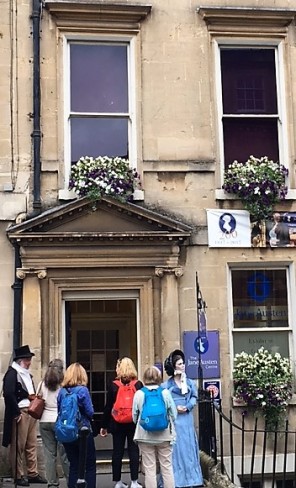
If I don’t get a move on I’ll be the only blogger/author/reader in the western world not to have had their say about Jane Austen this 200th anniversary year. Everyone has their own take on Jane Austen, even if it’s only to say (ruefully in partner’s case, defiantly in son’s): “I’ve never read any Jane Austen”. But she’s part of the national psyche along with Shakespeare and Dickens. We all remember our first read of her or our first film adaptation or if not we have her high on our bucket list of guilt.
I first came across Jane Austen in the hardback set belonging to my parents, published by Hamish Hamilton in their “Novel Library” series in 1947. The pretty same-but-different covers fascinated me. I’m not going to claim to have been one of those precocious “reading the classics at three” children, but I did pick them up and pretend to read aloud from them in language I made up as I went along, long before I knew what they were about or who had written them. My mother thought this extraordinary but as a teacher I now know that to play act reading having seen adults do it is common and very healthy behaviour. Sadly, the copy of Mansfield Park is now lost, probably to one of my games, but the others remain.
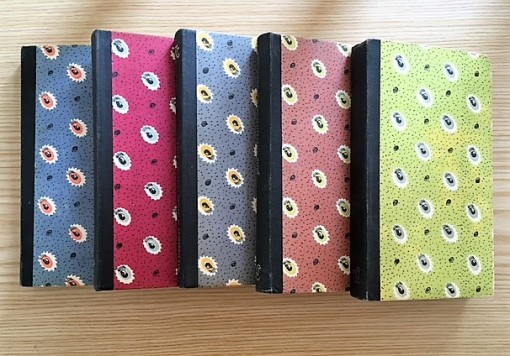
There were BBC adaptations of Pride and Prejudice we’d have watched as a family, long before Colin Firth took his shirt off and inexplicably became such a heartthrob. (I thought his performance wooden; he didn’t move me until The King’s Speech.) It is a truth universally acknowledged (now I’ve thought of it) that “Bride and Readiness” reflects the plot but runs off the tongue less elegantly than the title of the most famous novel. Even those who have never dipped into it could probably place the first line, but they’ll have missed the humour: when the execrable Mr Collins seeks a bride and finds the eldest Bennet daughter “likely to be very soon engaged”, he “…had only to change from Jane to Elizabeth––and it was soon done––done while Mrs Bennet was stirring the fire.”
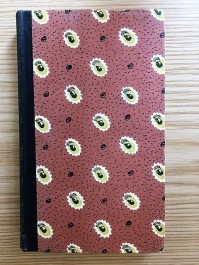 I’d certainly read P&P by the time I came to study the bleaker Persuasion for A level. This remains my favourite, along with Mansfield Park, because they both have more direct references to the wider economic and social realities of the time. Poverty is genteelly hinted at offstage in Pride and Prejudice but in Mansfield Park it is shown, Austen not baulking at the despair of women unable to avoid multiple unwanted pregnancies. Mrs Price, having married unwisely, finds herself now with “an husband disabled for active service, but not the less equal to company and good liquor.” Her letter to Lady Bertram speaks “so much contrition and despondence, such a superfluity of children and such a want of almost every thing else…She was preparing for her ninth lying-in and…bewailing the circumstance.” One child, Fanny, is taken in by richer relations and experiences a more elegant lifestyle, but she knows she can’t depend on it continuing. When she visits her original home, the sunshine that would enhance a richer household only brings out “the tea board never throughly cleaned, the cups and saucers wiped in streaks, the milk a mixture of motes floating in thin blue and the bread and butter growing every minute more greasy…” as “her mother lamented over the ragged carpet.”
I’d certainly read P&P by the time I came to study the bleaker Persuasion for A level. This remains my favourite, along with Mansfield Park, because they both have more direct references to the wider economic and social realities of the time. Poverty is genteelly hinted at offstage in Pride and Prejudice but in Mansfield Park it is shown, Austen not baulking at the despair of women unable to avoid multiple unwanted pregnancies. Mrs Price, having married unwisely, finds herself now with “an husband disabled for active service, but not the less equal to company and good liquor.” Her letter to Lady Bertram speaks “so much contrition and despondence, such a superfluity of children and such a want of almost every thing else…She was preparing for her ninth lying-in and…bewailing the circumstance.” One child, Fanny, is taken in by richer relations and experiences a more elegant lifestyle, but she knows she can’t depend on it continuing. When she visits her original home, the sunshine that would enhance a richer household only brings out “the tea board never throughly cleaned, the cups and saucers wiped in streaks, the milk a mixture of motes floating in thin blue and the bread and butter growing every minute more greasy…” as “her mother lamented over the ragged carpet.”
In Pride and Prejudice the soldiers prance about showing off their uniforms but in Persuasion, although the Napoleonic wars remain offstage, there is much more discussion of and respect for the Naval men’s experiences – and for their feelings too. Captain Harville: “If I could but make you comprehend what man suffers when he takes a last look at his wife and children, and watches the boat that he has sent them off in, as long as it is in sight, and then turns away and says, ‘God knows whether we ever meet again!'”.
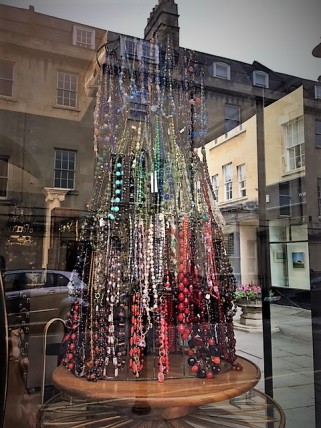
In all her novels, Austen watches from the corner of the room to snipe at snobbery even more effectively than Thackeray. As Mr Collins tells Elizabeth: “Lady Catherine will not think the worse of you for being simply dressed. She likes to have the distinction of rank preserved.” When the first line of Persuasion tells you Sir Walter Elliot’s favourite amusement is looking himself up in The Baronetage, you know she’s going to have fun with him – but this isn’t out of date. Jacob Rees-Mogg, and any MP with a duck house to restore on his moat, could have moved in the same circles. Fanny Price’s overcrowded family home, and her tired mother unable to afford the consumer goods she’d like are entirely recognisable to anyone restricted to a 1% pay rise for the past two parliaments.
(For an effective and quick description of how Austen describes the social questions of her time and ours, there’s an incisive little article in last week’s Guardian by the comedian Sarah Pascoe. It may even convert the men in my family…)
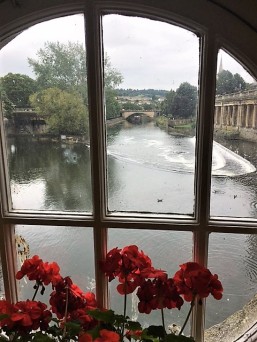
Northanger Abbey turned up when I was at university, on the Romanticism in European literature course. We studied mad Gothic novels, full of castles, ghosts and sinister old retainers; here was Austen’s lampoon of the same. The Saturday Guardian is fond of asking celebs who they’d invite to their dream dinner party: if I was celebrated enough to be asked, I’d have Austen and Stella Gibbons and relish the discussion between the satirists who created Northanger Abbey and Cold Comfort Farm. “And now I may dismiss my heroine to the sleepless couch which is the true heroine’s portion; to a pillow strewed with thorns and wet with tears. And lucky may she think herself if she get another good night’s rest in the course of the next three months.”
Sense and Sensibility is highly readable, the satire on genre conventions more subtle than in Northanger Abbey, but still much alive: “…though [Elinor’s] complexion varied, she stood firm in incredulity, and felt in no danger of an hysterical fit or a swoon.” For me this novel has made the best film adaptations, perhaps due to the double act of the two sisters of equal importance to the story structure.
The only one I don’t really enjoy, despite dutiful re readings, is Emma. For me, she’s just too dislikable, and it isn’t compensated for by her growing wisdom during the story. True, she is Austen’s deepest study in snobbery, but the nutshells and vignettes, the de Burghs and Sir Walter Elliots do the job just as well while allowing space for a more interesting main story. In Emma I think Austen takes longer to say much less, and the whole premise has dated more than her other stories.
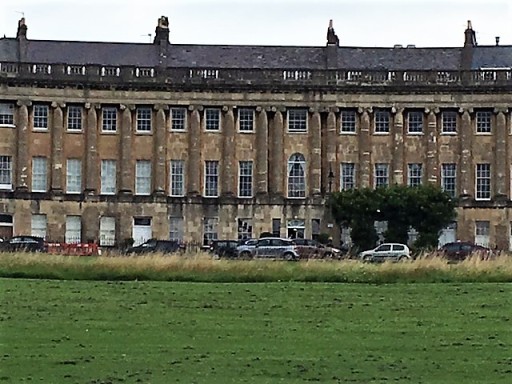
Last month we had an overnight stay in Bath. This UNESCO world heritage city features in Northanger Abbey, with naive heroine Catherine Morland impressed and excited by the cosmopolitan glamour, and in Persuasion when the older Anne Elliot finds it sordid and exhausting. Bath tourist office will point you to the places where Austen lived and wrote and to the sites used in the novels and there’s a dedicated museum which is well meaning but verges on the vulgar. (How Austen would lampoon it, or fastidiously ignore it perhaps.) There’s a nice personal account of touring relevant parts of Bath by an Austen enthusiast here. It’s always a pleasure to visit Bath: fascinating glimpses of the backs of buildings as well as their yellow stone facades, all elegance and symmetry, bring social history and class divides to immediate life here, the realities for servants and tradesmen as visible as the fanlights and carriage sweeps of the rich. As in Austen’s time, Bath is crowded, fashionable, expensive and can be indigestible: you must escape to the wonderful surrounding countryside to get your breath back. For a fascinating fictionalised account of how similar architecture in nearby Bristol was built, see Helen Dunmore’s last novel, Birdcage Walk. Much of it is, I’m equally true of the beautiful terraces of Bath.

Anyway, that’s my Jane Austen. I’d like to hear about yours.
©Jessica Norrie 2017
I really enjoy this. I also love Bath, having lived there for a semester as an undergraduate, but didn’t realize Jane supposedly didn’t like Bath. This stunned me because of all the Austen links to Bath and she even set Northanger Abbey there. However, when I visited the Jane Austen House Museum in Chawton they say Austen didn’t like living in Bath as evidence from her not producing any work while there. I have a post about my visit to the museum if it interests you. Thanks for sharing this 🙂
LikeLiked by 1 person
Thank you! I think the general feeling is she was quite quiet and discreet and found Bath ostentatious, vulgar and expensive. Not so different from much of London today. A den of fashion and wannabes is a good setting for a book though, and she wasn’t one to pass that up. Do post the link to your post as clicking on your name didn’t work!
LikeLiked by 1 person
Sorry about that. Here is the link: http://wp.me/p9d5lM-v
LikeLiked by 1 person
Well said! I love Jane Austen! I’ve only read two of her novels so far—”Pride and Prejudice” and “Sense and Sensibility”—and I loved them both! I even wrote reviews for both books on my blog earlier this year. Her writing is so witty and humorous! I look forward to reading more of her work! 🙂
LikeLiked by 1 person
That’s great – I hope I’ve spurred you on. She’s so much more relevant than people realise, I think, and so funny, which may be why film and TV adaptations work so well.
LikeLiked by 1 person
Fantastic Jessica and really have done Jane Austen Justice.. we did Pride and Prejudice at school and I also read Emma at the same time to get a better feel for Jane Austen’s world. Like you I did not enjoy Emma very much as I didn’t like her as a character.
LikeLiked by 1 person
Ooh whisper it…I’m expecting to be scolded for not liking Emma! Glad school didn’t spoil P&P for you.
LikeLiked by 1 person
Reblogged this on Smorgasbord – Variety is the spice of life and commented:
Here is something very special for all Jane Austen fans and also for those who so far have avoided reading her novels ( a little incentive to give them a chance). Jessica Norrie takes us through them with a commentary regarding their relevance to the society of the day, and also comparing on occasion, to our own time. Certainly those of you who fancied Colin Firth might like to look away for a few seconds as Jessica describes his performance in the film adaptation… But don’t forget to look back again quickly so that you do not miss the rest of the post and also the outstanding photos of Bath, where it is certain that Jane Austen people watched and developed some of her most notable characters. #recommended
LikeLiked by 1 person
Thank you Sally, as ever. I think Colin Firth will survive without me – but yes, fellow bloggers, do read JA. It doesn’t take as long as you’d think to get into her style, and there’s lots of dialogue and different characters to help the narrative along. I was quite surprised on looking again to see how modern she is with regard to “show not tell”.
LikeLiked by 1 person